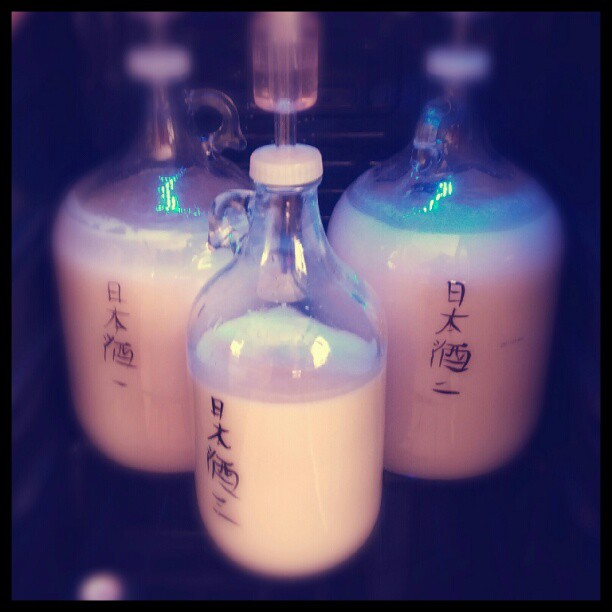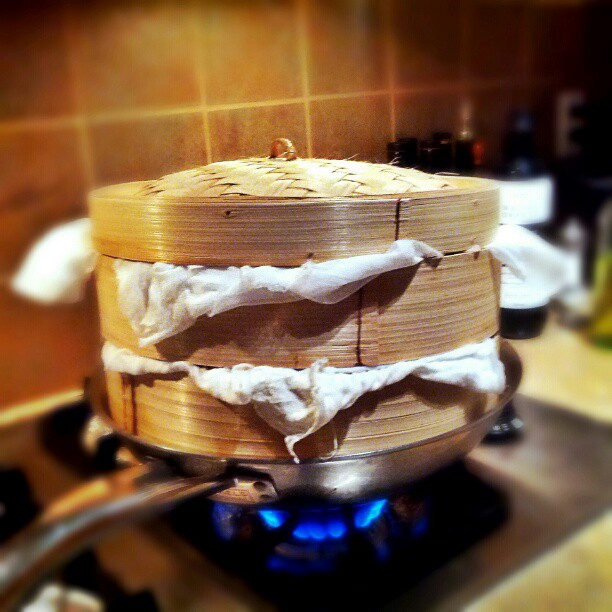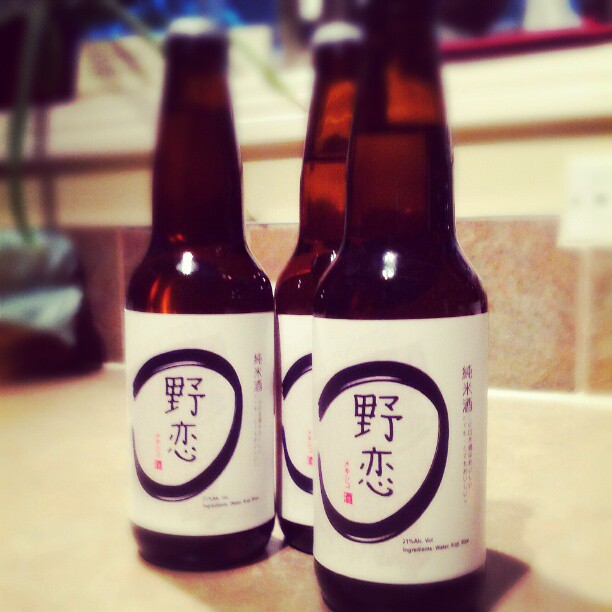The First Batch

Time to start brewing!
My very first batch was a learning one. No crazy tricks, no deviations from the standard, traditional procedure followed by our Japanese friends. Some extra equipment was needed:
- A fermenter. Essentially, a really big food-grade plasic bucket.
- A couple of glass 1-gallon carboys, for the secondary fermentation.
- A mini-fridge to keep everything at a controlled temperature of around 7 or 8 degrees (celsius)
If you are curious about the basic sake recipe, take a look at William Auld’s book, "Brewing Sake: Release the Toji Within", excellent reference material. Also, all of my supplies (koji, polished rice, and yeast) came from HomeBrew Sake
The whole process takes about three months, with three or four days where lots of stuff has to be done, and several weeks where little stuff (like stirring the sake-in-progress) has to happen twice daily. It is not a work-free process, you know, but that is precisely where the fun is. Also, one of the reasons why the sake is artisanal.
Rice must be steamed, and for such a task nothing better than bamboo steamers over a german-made wok.

\nThe moromi (or fermenting sake mash) jumps into activity, the dual process described in my previous post starts to happen in all of its magnificence, and this extremely efficient process generates alcohol almost at a rate of 1 degree per day.\nAfter some time, the moromi is pressed into the carboys, still looking like milk because of the solids in suspension (if you like nigori, we are close to it) and the whole thing is left to rest and decant for a long, long time (excuse my badly written kanji):

The decanting process will get rid of most of the solids, leaving us with a clear-er liquid. At this point we do a first pasteurization, age some more, second pasteurization, and voila! We are ready for bottling!\nHere you can also appreciate the first version of my label in all of its preliminary glory.

What about the tasting notes? – Somebody
Why, glad you asked. As I mentioned in the first paragraph, this sake was not reduced. It is, as you’d call it, a Junmai Ginjo, Genshuu, and ended up with around 22% Alc.Vol.
Strong notes of cantalupe (courtesy of this particular yeast strain) with a very full palate. Jumpy attack. Long and sweet aftertaste.
Pairs well with meat, fish, vegetables, and any other edibles. Also pairs well with situations where no other edibles are around.
Production: 15 bottles.